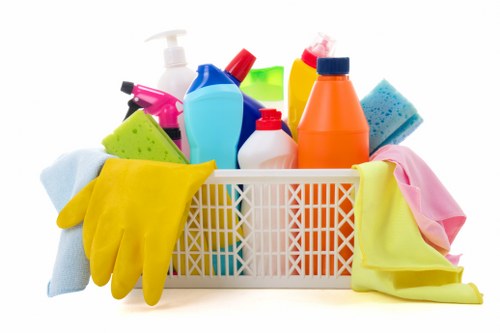Rug Cleaning in Kitchen Cleaning: Keeping Your Kitchen Fresh and Inviting
Introduction to Rug Cleaning in Kitchen Spaces

The kitchen is often considered the heart of the home, where meals are prepared, and families gather. Rug cleaning in kitchen cleaning plays a crucial role in maintaining a hygienic and aesthetically pleasing environment. Regular cleaning not only enhances the appearance of your kitchen but also extends the life of your rugs.
Kitchen rugs are exposed to spills, stains, and heavy foot traffic, making them susceptible to dirt accumulation and wear. Implementing effective rug cleaning practices can mitigate these issues, ensuring your kitchen remains spotless and comfortable.
In this article, we will explore the best practices for rug cleaning in kitchen settings, the benefits of maintaining clean rugs, and tips to prolong their longevity.
Why Regular Rug Cleaning is Essential in the Kitchen

Rug cleaning in kitchen cleaning is not just about aesthetics; it also has significant health implications. Kitchen rugs can harbor bacteria, allergens, and mold, especially in areas prone to moisture and spills. Regular cleaning helps eliminate these potential health hazards, creating a safer environment for you and your family.
Moreover, a clean rug contributes to the overall hygiene of your kitchen. Kitchens are spaces where food is prepared, and maintaining clean surfaces and textiles is paramount to prevent contamination and ensure food safety.
Additionally, routine rug cleaning helps preserve the rug's color and fabric integrity, preventing fading and deterioration caused by constant exposure to kitchen elements like heat, moisture, and grease.
Effective Methods for Kitchen Rug Cleaning

Implementing the right rug cleaning techniques can significantly enhance the cleanliness and lifespan of your kitchen rugs. Here are some effective methods:
1. Regular Vacuuming
Frequent vacuuming removes loose dirt, crumbs, and debris that accumulate on the rug's surface. Use a vacuum cleaner with adjustable settings to cater to different rug textures and pile heights.
2. Spot Cleaning for Stains
Immediate attention to spills and stains prevents them from setting into the rug fibers. Use a mild detergent mixed with water or a specialized rug cleaner to gently blot the affected area.
3. Deep Cleaning with Steam Cleaners
Steam cleaning penetrates deep into rug fibers, effectively removing embedded dirt and sanitizing the rug. Ensure the rug is thoroughly dried after steam cleaning to prevent mold growth.
4. Professional Cleaning Services
For heavily soiled or delicate rugs, consider hiring professional cleaning services. Professionals have the expertise and equipment to handle various rug materials and stains without causing damage.
5. DIY Cleaning Solutions
You can create homemade cleaning solutions using ingredients like vinegar, baking soda, and essential oils. These natural cleaners are eco-friendly and safe for both your rug and household members.
Choosing the Right Cleaning Products

Selecting appropriate cleaning products is vital for effective rug cleaning in kitchen cleaning. Here are some factors to consider:
- Rug Material: Different materials like wool, cotton, or synthetic fibers require specific cleaning agents to avoid damage.
- Stain Type: Identify the type of stain (grease, wine, food) to choose the most effective remover.
- Eco-Friendly Options: Opt for environmentally safe products to reduce chemical exposure in your kitchen.
- Allergen-Friendly: If household members have allergies, select hypoallergenic cleaning solutions to minimize reactions.
Always perform a spot test on a small, inconspicuous area of the rug before applying any cleaning product to ensure it does not cause discoloration or damage.
Preventative Measures to Maintain Clean Kitchen Rugs

Prevention is key to minimizing the need for intensive rug cleaning. Implement these strategies to keep your kitchen rugs clean:
- Use Rug Pads: Placing rug pads underneath kitchen rugs reduces slippage, protects the rug from wear, and makes cleaning easier.
- Implement a No-Shoes Policy: Encouraging family members and guests to remove shoes before entering the kitchen minimizes dirt transfer.
- Place Mats at Entry Points: Mats at kitchen entrances catch dirt and moisture, preventing them from reaching the rugs.
- Address Spills Immediately: Promptly cleaning up spills prevents stains and reduces the risk of mold growth.
- Rotate Rugs Regularly: Rotating rugs ensures even wear and prolongs their lifespan.
Additional Tips for Rug Maintenance
- Avoid Direct Sunlight: Prolonged exposure to sunlight can fade rug colors. Position rugs away from windows or use curtains to protect them.
- Regularly Clean Underneath: Dust and debris can accumulate underneath rugs, so lifting and cleaning the floor beneath them is essential.
- Repair Damages Promptly: Address any tears or fraying immediately to prevent further deterioration.
Benefits of Professional Rug Cleaning Services
While DIY cleaning methods are effective for routine maintenance, professional rug cleaning services offer several advantages:
1. Expertise and Experience
Professionals possess the knowledge to handle various rug types and stains, ensuring thorough and safe cleaning without damaging your rugs.
2. Advanced Equipment
Professional cleaners use specialized machines and cleaning agents that provide a deeper clean compared to household methods.
3. Time and Convenience
Hiring professionals saves you time and effort, allowing you to focus on other household tasks while your rugs are expertly cleaned.
4. Comprehensive Cleaning
Professional services often include additional benefits like deodorizing, stain protection, and fabric restoration, enhancing the overall appearance and longevity of your rugs.
5. Health Benefits
Deep cleaning eliminates allergens, bacteria, and mold, contributing to a healthier kitchen environment for you and your family.
Choosing the Right Rug Cleaning Service
Selecting a reputable rug cleaning service ensures you receive high-quality results. Consider the following when making your choice:
1. Reputation and Reviews
Research the company's reputation by reading customer reviews and testimonials. Positive feedback indicates reliable and satisfactory service.
2. Services Offered
Ensure the service provider offers comprehensive rug cleaning solutions, including stain removal, deodorizing, and fabric protection.
3. Certifications and Insurance
Choose companies with proper certifications and insurance to guarantee professional standards and protect against potential damages.
4. Pricing and Packages
Compare pricing structures and available packages to find services that fit your budget while meeting your cleaning needs.
5. Customer Service
Responsive and helpful customer service indicates a company’s commitment to client satisfaction. Don’t hesitate to ask questions before committing.
Making the Decision
Investing in professional rug cleaning can significantly enhance the cleanliness and longevity of your kitchen rugs. Evaluate your specific needs and choose a service that aligns with your expectations.
Eco-Friendly Rug Cleaning Solutions
With increasing awareness of environmental sustainability, eco-friendly rug cleaning options are gaining popularity. These solutions minimize chemical usage and reduce environmental impact while maintaining effective cleaning standards.
1. Natural Cleaning Agents
Ingredients like vinegar, baking soda, and lemon juice are excellent for removing stains and neutralizing odors without harsh chemicals.
2. Bio-Enzymatic Cleaners
Bio-enzymatic cleaners use natural enzymes to break down organic stains, providing deep cleaning without toxic residues.
3. Steam Cleaning with Eco-Friendly Products
Combine steam cleaning with eco-friendly detergents to achieve a thorough clean while adhering to green cleaning principles.
4. DIY Green Cleaning Recipes
Create your own cleaning solutions using simple, non-toxic ingredients. This approach is cost-effective and customizable to your specific cleaning needs.
Benefits of Eco-Friendly Cleaning
- Healthier Environment: Reduces exposure to harmful chemicals for you and your family.
- Environmental Protection: Minimizes pollution and conserves natural resources.
- Safe for Pets: Eliminates toxic residues that could harm household animals.
- Cost-Effective: Utilizes readily available and affordable ingredients.
Implementing Eco-Friendly Practices
Adopting eco-friendly rug cleaning methods contributes to a healthier home and a sustainable future. Incorporate these practices into your regular cleaning routine for optimal results.
Maintaining Kitchen Rugs After Cleaning
Post-cleaning maintenance ensures your rugs remain clean and fresh between thorough cleaning sessions. Follow these guidelines to prolong the benefits of your rug cleaning efforts:
1. Immediate Spill Management
Encourage prompt cleanup of spills and stains to prevent them from setting into the rug fibers. Use absorbent materials to blot moisture effectively.
2. Regular Vacuuming Schedule
Establish a consistent vacuuming routine to remove surface dirt and prevent buildup. Adjust the frequency based on rug usage and kitchen traffic.
3. Air Circulation
Ensure proper ventilation in the kitchen to reduce moisture levels, which can lead to mold growth on rugs. Use exhaust fans or open windows to maintain airflow.
4. Protective Measures
Utilize rug protectors or applying a preventative stain treatment after cleaning to shield your rug from future spills and stains.
5. Seasonal Maintenance
Conduct seasonal deep cleans to address accumulated dirt and refresh your rug's appearance, maintaining its vibrancy and cleanliness throughout the year.
Common Challenges in Rug Cleaning and Solutions
Cleaning kitchen rugs presents unique challenges due to the nature of kitchen activities. Here are common issues and how to address them:
1. Grease Stains
Grease is a frequent culprit in kitchens. To tackle grease stains, sprinkle baking soda on the affected area to absorb the oil, then gently vacuum or brush it away before applying a mild detergent.
2. Food and Beverage Spills
Quickly blot spills with a clean cloth to prevent staining. Use appropriate cleaners based on the spill type, such as a vinegar solution for acidic stains or a soap-based cleaner for protein-based stains.
3. High Traffic Wear and Tear
High foot traffic can cause rug fibers to flatten and wear. Rotate rugs regularly and consider using rug pads to reduce friction and extend rug lifespan.
4. Pet-Related Stains and Odors
If pets use the kitchen area, rugs may accumulate additional stains and odors. Use enzymatic cleaners to eliminate pet odors and stains effectively.
5. Mold and Mildew
Moisture from spills and poor ventilation can lead to mold growth. Ensure rugs are thoroughly dried after cleaning and maintain a dry kitchen environment to prevent mold.
Proactive Problem-Solving
Addressing these challenges proactively through regular maintenance and appropriate cleaning techniques ensures your kitchen rugs remain in optimal condition.
Selecting the Right Rug for Your Kitchen
Choosing an appropriate rug can simplify cleaning and maintenance while enhancing your kitchen's decor. Consider the following factors when selecting a kitchen rug:
1. Material
Opt for durable, stain-resistant materials like synthetic fibers (polypropylene, nylon) or treated natural fibers (wool) that can withstand kitchen spills and heavy use.
2. Size and Shape
Select a rug size that fits your kitchen layout without obstructing walkways or appliance movement. Common shapes include rectangular, square, and runner rugs.
3. Texture and Pile Height
Low-pile rugs are preferable for kitchens as they are easier to clean and less likely to trap dirt. Smooth textures also facilitate quicker drying after spills.
4. Color and Pattern
Choose colors and patterns that complement your kitchen's color scheme and hide stains effectively. Darker or patterned rugs can disguise minor spills and dirt.
5. Non-Slip Backing
Ensure rugs have a non-slip backing or use rug pads to prevent slipping and enhance safety in the kitchen.
Balancing Aesthetics and Functionality
A well-chosen rug adds style to your kitchen while meeting practical cleaning and maintenance needs, creating a harmonious and functional space.
DIY Rug Cleaning Tips for Kitchen Rugs
For those who prefer handling rug cleaning independently, here are some DIY tips to maintain your kitchen rugs:
1. Homemade Detergent Solution
Create a cleaning mixture using equal parts of white vinegar and water. Add a few drops of mild dish soap for enhanced cleaning power. Apply the solution to stains and blot gently.
2. Baking Soda Deodorizer
Sprinkle baking soda liberally over the rug to absorb odors and refresh the fibers. Let it sit for 15-30 minutes before vacuuming thoroughly.
3. Hydrogen Peroxide for Stubborn Stains
For tough stains, apply a mixture of hydrogen peroxide and dish soap. Allow it to sit for a few minutes before rinsing with clean water and blotting dry.
4. Dry Cleaning with Cornstarch
Apply cornstarch to grease or oil stains to absorb the moisture. Let it sit for several hours, then vacuum it away before cleaning the area with a mild detergent.
5. Sun Drying for Freshness
After cleaning, spread the rug in a sunny area to dry completely. Sunlight acts as a natural disinfectant and helps eliminate lingering odors.
Safety Precautions
- Always test cleaning solutions on a small, hidden area of the rug to ensure they do not cause damage.
- Use gloves to protect your skin from harsh chemicals or irritants.
- Ensure proper ventilation when using strong cleaning agents to avoid inhaling fumes.
- Keep children and pets away from the cleaning area to prevent accidents.
Benefits of DIY Cleaning
DIY rug cleaning allows for greater control over the cleaning process, customization of solutions, and cost savings. It also provides a sense of accomplishment in maintaining your kitchen's cleanliness.
Integrating Rug Cleaning into Your Kitchen Cleaning Routine
Incorporate rug cleaning seamlessly into your overall kitchen cleaning schedule to ensure consistent maintenance and cleanliness. Here’s how:
1. Establish a Cleaning Schedule
Create a routine that includes regular vacuuming, immediate spill management, and periodic deep cleaning. Consistency is key to preventing dirt buildup and maintaining rug integrity.
2. Combine Tasks for Efficiency
Pair rug cleaning with other kitchen cleaning activities, such as wiping countertops or mopping floors, to save time and streamline your efforts.
3. Delegate Responsibilities
Assign specific rug cleaning tasks to family members to share the workload and ensure rugs receive the necessary attention regularly.
4. Use Appropriate Cleaning Tools
Equip your kitchen with necessary cleaning tools like a quality vacuum, blotting materials, and suitable cleaning solutions to make rug maintenance easier.
5. Monitor Rug Condition
Regularly inspect your rugs for signs of wear, stains, or damage. Addressing issues promptly prevents major problems and extends rug lifespan.
Creating Habits for Long-Term Cleanliness
Developing good cleaning habits ensures your kitchen rugs remain clean and fresh with minimal effort, contributing to an overall tidy and welcoming kitchen environment.
Conclusion: The Importance of Consistent Rug Cleaning in the Kitchen
Rug cleaning in kitchen cleaning is a vital aspect of maintaining a clean, healthy, and inviting kitchen space. By adopting effective cleaning methods, using the right products, and implementing preventative measures, you can ensure your kitchen rugs remain in excellent condition.
Whether you choose to handle rug cleaning yourself or enlist professional services, consistent maintenance plays a significant role in preserving the appearance and functionality of your rugs.
Investing time and resources into proper rug cleaning not only enhances your kitchen’s aesthetic appeal but also promotes a healthier living environment for you and your loved ones.
Don’t wait until stubborn stains or odors take over. Contact us today to learn more about our specialized rug cleaning services and keep your kitchen rugs looking their best!
Frequently Asked Questions about Rug Cleaning in Kitchens
1. How Often Should I Clean My Kitchen Rugs?
It is recommended to vacuum kitchen rugs at least once a week and perform deep cleaning every 3-6 months, depending on usage and stain frequency.
2. Can I Use Bleach on My Kitchen Rugs?
Using bleach is generally not recommended as it can damage rug fibers and cause discoloration. Opt for mild detergents or specialized rug cleaners instead.
3. How Do I Remove Pet Stains from Kitchen Rugs?
Use enzymatic cleaners designed to break down pet stains and odors. Blot the area thoroughly and ensure the rug dries completely to prevent residual odors.
4. What Are the Signs My Rug Needs Professional Cleaning?
Visible stains, persistent odors, deep-seated dirt, or fabric damage are indicators that your rug may require professional cleaning services.
5. Can I Machine Wash My Kitchen Rug?
While some rugs are machine washable, many kitchen rugs require spot cleaning or professional cleaning. Always check the rug’s care label before attempting machine washing.
Get Expert Help Today
For any rug cleaning challenges, our professional team is here to assist. Book your service now and experience the difference of expertly cleaned kitchen rugs!